CANDACE Phillips remembers eagerly stepping onto a steep hilly bank that overlooks the village of Masakenari in the Konashen Community-owned Conservation Area of Region Nine (Upper Takutu-Upper Essequibo) during a trip, where she marvelled at the largely self-sustained Indigenous community surrounded by pristine grasslands. For the nature enthusiast who is trailblazing a path in local tourism, it brings unending joy to experience a destination’s hidden gems in its history, culture, language, traditions and cuisine. She also enjoys sharing connections with the people living there, while working to pave a way forward in building a robust and thriving community-based tourism sector in Guyana.
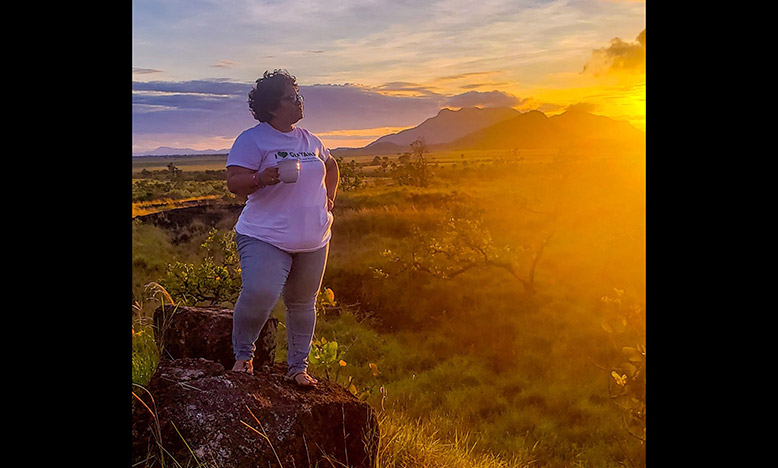
Phillips, however, did not always envision taking on a lead role in tourism, although she had an innate love for the outdoors. Born in Santa Rosa, Moruca, Region One (Barima Waini), Phillips and her mother, Marlene Viera, moved to Georgetown when she was an infant. “My mom was a single- parent; she really tried to instill those values and push me towards my goals,” expressed Phillips, who shed light on the many sacrifices her mother made to ensure she received an education, particularly while attending the Bishop’s High School, and to teach her to be unafraid in learning new things and facing challenges. “She wanted me to be the best I can be,” said Phillips.
By embracing the beauty of the outdoors, even as a child, she would often wait in anticipation for trips to her grandmother, who lived in Moruca, Region One, to travel along the ‘99 turns’ on the Moruca River. “You’re just going, with your boat ‘zip-zapping’ on the waterway, and there is this moment of freedom,” she recalled vividly, before highlighting that the journeys awakened an adventurous spirit in her to know more about Guyana. Even though she knew she shared Arawak, or Lokono, ancestry, these trips also spurred a deeper interest in Phillips to try to understand her Indigenous heritage.
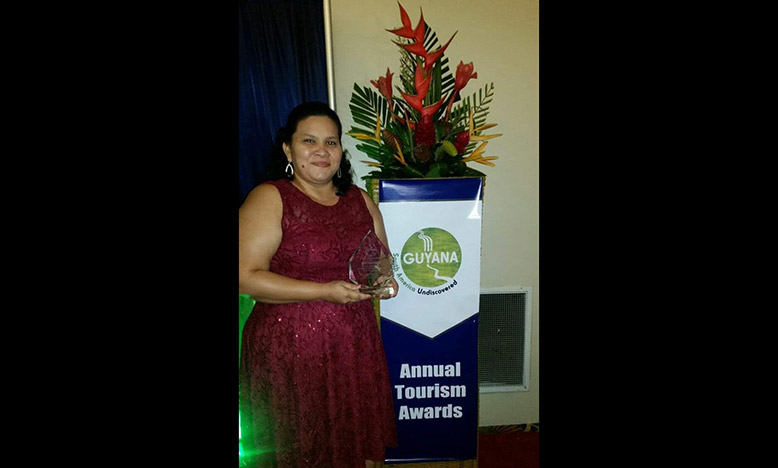
“We are really shaped by our environment. I felt a part of me was missing, [and] because of the way I look, there are expectations on me. People say things like, ‘You don’t know how to paddle a canoe, fish or spin cotton?’ And I have said, ‘I might look like this, but I grew up in Georgetown.’ I felt that disconnect,” noted Phillips.
Driven by her ambition to become a business lawyer while remaining hopeful to foster a connection to her Indigenous roots, Phillips enrolled in the Economics programme at the University of Guyana (UG), and went on to pursue a Law degree. In her quest to learn more about her heritage and challenge stereotypes about the Indigenous way of life, she joined the Amerindian Peoples Association (APA) as a programme assistant. At the APA, Phillips had considerable latitude to explore her Indigenous ancestry, and discover the depth of Indigenous culture while she travelled to different communities neatly tucked away across Guyana’s landscape.
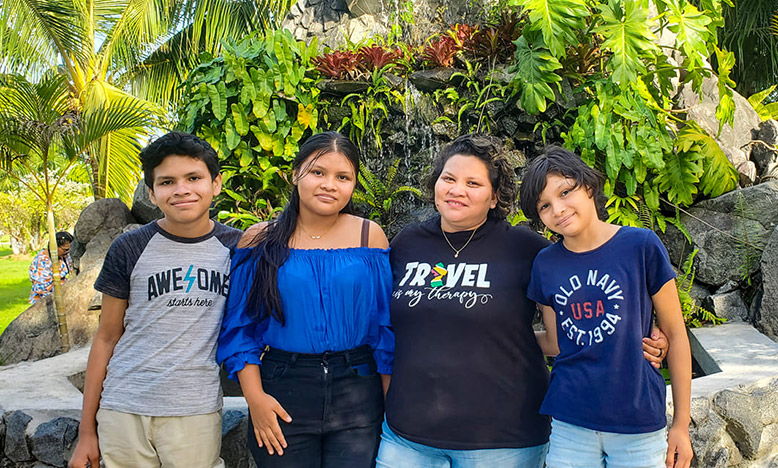
She welcomed motherhood before long, and opted to be a stay-at-home mom for a short time. Eventually, Phillips transitioned into journalism, briefly, when she became a reporter at the Stabroek News. After a while, she decided the time was right to give her children the chance to enjoy the experience of nature, and together they all moved to Aishalton, in the Rupununi, in 2013.
THE START OF SOMETHING NEW
The Rupununi offered a revitalising experience for Candace, who developed a new and refreshing outlook on her life, career and motherhood. She began teaching several subjects at Aishalton Secondary School when Conservation International Guyana (CIG) presented her with a window of opportunity to support the facilitation of a tourism workshop at the secondary school for fifth form students.
“All I knew at that point was that I love travelling. I had no inkling about tourism, and that was not my path in life,” she noted. By being purpose-driven to integrate taking action to sustain nature, bring awareness to Indigenous heritage and travel to meet new people and learn about communities and the way they thrive, in 2015, Phillips accepted an offer from Conservation International Guyana to become a Tourism Coordinator based in Lethem. Although she doubted her ability to fit this role, her determination to test her limits motivated her to accept the challenge.

The main deliverable of her role as tourism coordinator was to develop a coordinating mechanism for tourism development in Region Nine, and the organisation created was ‘Visit Rupununi’. Candace shared it was also a learning experience for her, and to create ‘Visit Rupununi’, she invested a lot of time, resources and effort into reading and researching the Rupununi region, taking time to speak with Rupununi practitioners in the field for over 10 years and making the research applicable and workable to the Rupununi.
“It is a very crowning moment, because it not only represents leaving a legacy. For me, that organisation represents sacrifice. It represented everything that I had to, all these stages I had to go through to be there, to lead, to really be recognised as someone who knows what’s going on in the tourism world. In the Rupununi, it symbolises every piece of paper I had to read, every book and every video I’ve had to look at it,” she remarked, before emphasising: “It also represents the first step in becoming who I am today.”
A LOVE FOR TOURISM
Phillips attributes the time she spent living and working in the Rupununi to her broadened socio-cultural perspectives about a community and its immediate environment and creating a lasting positive impact in local communities that becomes an asset to local tourism. After three years, she joined the Guyana Tourism Authority (GTA), and now serves as the Product Development Manager.
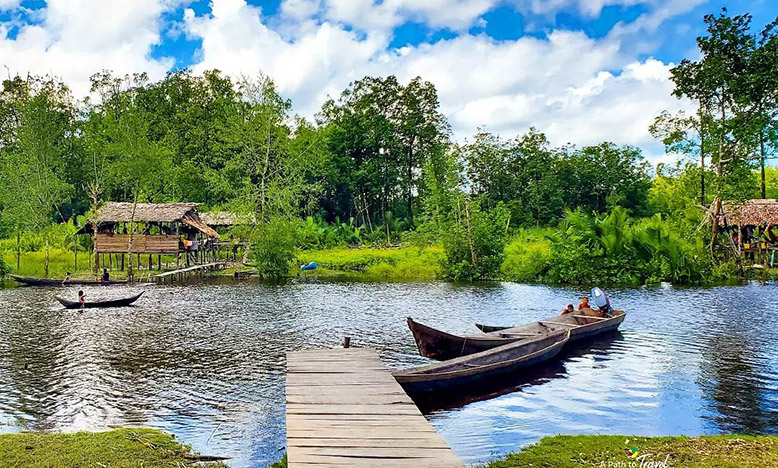
Phillips indicated that product development is centred on the creation of new tourism products or experiences in a particular destination. As a field that is indispensable to the holistic tourism arena grounded by a framework that prioritises community-led and community-owned resources, Phillips and her team work toward ensuring that Guyana continues to boast a thriving community-based tourism sector.
“Our work, from the GTA side, is simply to facilitate the process to help communities understand a bit more what they need to do, step-by-step, and to provide the guidance so they can achieve their tourism dreams and goals, independent of the GTA, and then become hosts. They can be able to promote and market their own products, and develop their own itineraries,” Phillips detailed.
Another part of the process involves inviting tour operators to familiarise themselves with a destination’s tourism products. She stated that these products are designed to create a ‘wow’ effect, and are developed for niche markets such as birdwatchers, adventurers, hikers, and people who love riding all-terrain vehicles (ATVs) or horses, to name but a few.
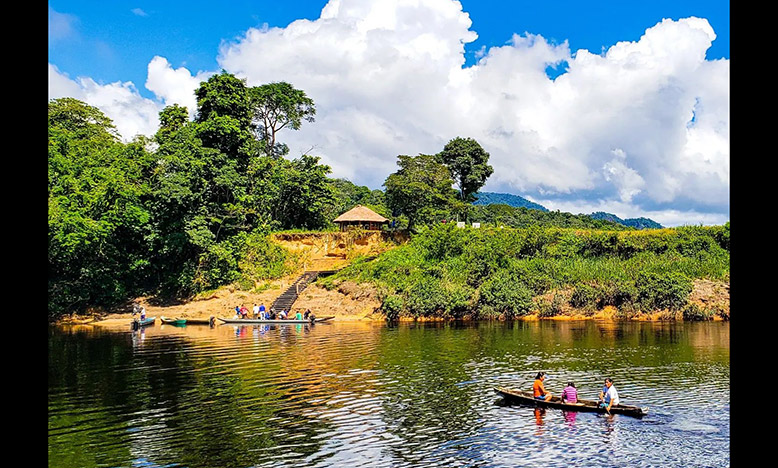
Currently, the GTA product development team is engaging approximately 20 communities throughout Guyana’s ten administrative regions. Phillips proceeded to highlight that product development is divided into community-based and a private-sector-driven components. During the product assessment phase, the team usually visits locations within a community where, she said, they would walk along muddy paths, climb mountains or even navigate caves to better understand its physical and geographic layout.
Although the sector is progressing rapidly, Phillips noted that there is still a need for intervention to reduce the pricing of, and make affordable tourism experiences in Guyana. She pointed out that there is also a need for better conservation of the environment, especially to reduce littering, and even enhance customer service.
“The exciting part is being out there in communities. You’re out there in communities; you’re getting to do trainings, (one part). We do culinary training, delivering quality service, tour guide training, and it just depends on the needs of the community, we will facilitate in support training,” she shared. By aiming to work with a variety of stakeholders in a community, the team is able to fully understand the best possible way to transform the community’s tourism products, and make them marketable to local and international tourists.
PRESERVING INDIGENOUS HERITAGE IN GUYANA
Phillips believes that community-based tourism, in essence, has been practised by the Indigenous Peoples of Guyana for centuries. In her view, it is society that now places an extra burden on Indigenous communities to conform to modern tourism standards without demanding other local communities to upkeep the same standards.
In addition to this, she put forward that if ‘true’ sustainability is the goal standard for local communities, then it is important when consulting these communities to engage them on developing tourism experiences to understand their way of life, and how they protect and preserve their Indigenous heritage and resources, and find unique ways to shape development that will continue their preservation efforts. Furthermore, by doing this will also help to change stereotypes about Indigenous Peoples, and to eliminate certain societal biases that exist.
As an Indigenous woman in a mostly male-dominated field, Phillips has learned to overcome stereotypical as well as sexist remarks to hold her own in any space, because she was determined to succeed. She noted with pride that schools in Aishalton have incorporated Wapishan, a traditional Indigenous language, into the class curriculum, which is essential in promoting and preserving Indigenous heritage.
A PATH TO TRAVEL
If one frequently accesses social media, there is the likelihood of scrolling past mesmerising landscape images that alluringly captures the countless extraordinary wonders of the Rupununi under a page with the name: ‘A Path to Travel’. Phillips started photographing places she had visited in 2020 for several reasons, mainly because she wanted the world to see Guyana’s natural beauty in its diverse people, culture and communities from a perspective that takes viewers along on an adventurous journey, as well as experience Indigenous heritage.
Whenever Phillips ventures out to travel, whether on a work or leisure-related trip, she is inspired to view her surroundings from a lens that will not only invoke a sense of shared cultural pride, serenity and an appreciation for humanity, but also inspire viewers across the world to travel to Destination Guyana and see its wonders for themselves. “I always want to enjoy the journey,” she said. For her leisure trips, Phillips takes along her three children, Jaedyn, Ethan and Madison, in hopes that someday they will share her profound love for travelling and tourism, and become inclined to make an impact as well.
As Phillips turns heads with her ambitious drive in pioneering a path in local tourism, she has no doubt come full circle with her childhood passion: A love for travelling and meeting people.



.jpg)










